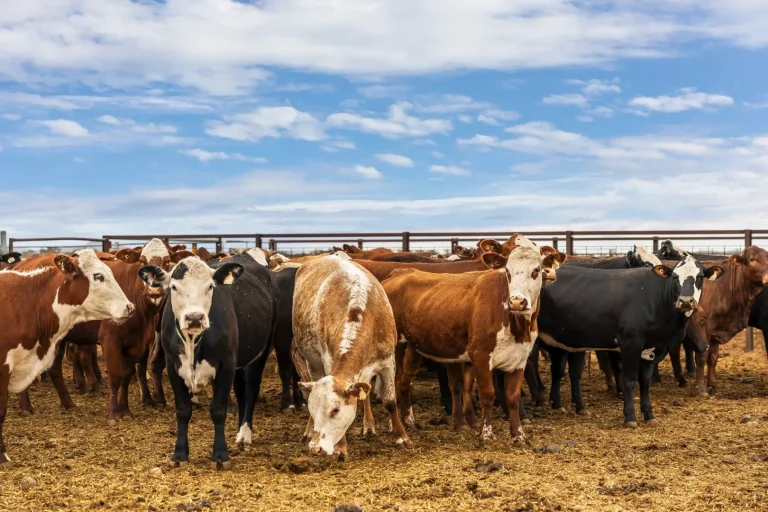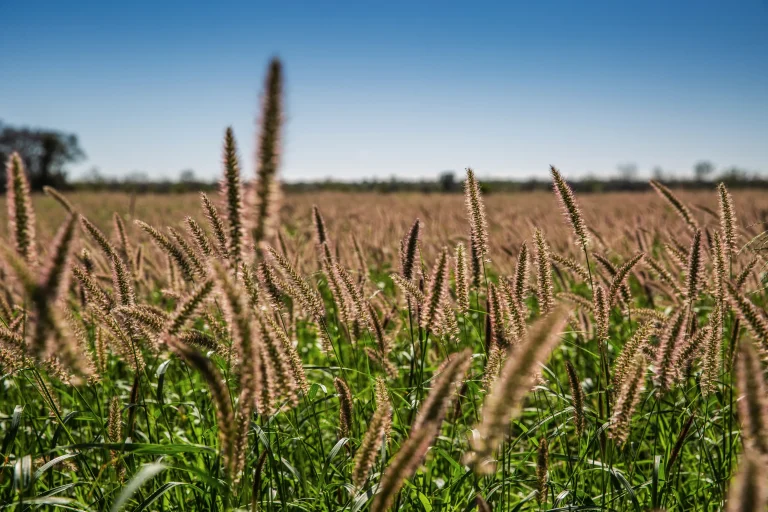Assessing Investment Opportunities in Australia’s Grazing Land Sector: Complete Guide
Australia’s vast pastoral landscapes present compelling investment prospects for those seeking to build wealth through agricultural real estate. With the continent hosting some of the world’s most extensive grazing operations, assessing investment opportunities in Australia’s grazing land sector requires sophisticated understanding of regional markets, seasonal patterns, and operational factors that drive long-term returns. At Agribusiness Horizons, we help investors navigate the complexities of pastoral property acquisition, combining deep market intelligence with specialized knowledge of cattle stations, sheep properties, and mixed livestock operations. Contact our experienced team to discuss your investment objectives and discover how professional guidance can optimize your portfolio development strategy. This comprehensive analysis will examine the key considerations, evaluation methods, and strategic approaches that successful investors use when entering Australia’s dynamic grazing land markets.
Understanding Australia’s Pastoral Investment Landscape
Australia’s grazing sector encompasses an extraordinary range of environments, from tropical cattle country in the north to temperate sheep regions in the south. This diversity creates distinct investment opportunities across different climatic zones, each offering unique advantages and challenges for pastoral property investors.
The sector benefits from established export markets, growing global protein demand, and Australia’s reputation for producing high-quality beef and lamb products. Recent infrastructure developments and technological advances have enhanced operational efficiency across many regions, making previously marginal areas more attractive to investors.
Pastoral properties vary dramatically in scale, from compact intensive operations near population centers to extensive stations covering hundreds of thousands of hectares in remote areas. This range provides investment options suitable for different capital levels, risk tolerance, and management preferences.
Government policy settings, including foreign investment regulations and land tenure arrangements, continue shaping investment flows into the sector. Understanding these regulatory frameworks becomes essential for both domestic and international investors considering pastoral property acquisitions.
Regional Investment Characteristics and Opportunities
Northern Australia’s Cattle Country
Northern Australia’s tropical and subtropical regions offer some of the continent’s most extensive grazing operations, with pastoral properties often measured in hundreds of thousands of hectares. These pastoral lease arrangements typically focus on beef cattle industry operations, taking advantage of year-round growing seasons and vast areas of native pasture with established carrying capacity.
Investment appeal in northern regions stems from relatively affordable per-hectare pricing, potential for operational improvements, and access to growing Asian export markets. However, investors must consider challenges including seasonal rainfall variability, cyclone risks, and remoteness from infrastructure and services.
The region’s investment characteristics favor larger-scale operations with experienced management capabilities. Properties often require significant working capital for stock, infrastructure maintenance, and operational improvements to achieve optimal productivity levels.
Southern Grazing Regions
Australia’s southern grazing regions encompass premium sheep farming and cattle country across temperate zones with more reliable rainfall patterns and superior drought resilience. Investment assessment in Australian livestock farming within these regions reveals they typically command higher per-hectare pricing but offer advantages including better infrastructure access, more stable seasonal conditions, and proximity to processing facilities.
Investment opportunities in southern regions often feature smaller property sizes, higher carrying capacities, and more intensive management systems. These characteristics appeal to investors seeking more manageable operations with potentially higher returns per hectare invested.
The temperate climate zones support diverse grazing enterprises including prime lamb production, wool growing, and cattle fattening operations. This diversity provides opportunities for income diversification and risk management through multiple revenue streams.
Mixed Farming Integration
Many grazing properties offer opportunities for mixed farming operations, combining livestock production with cropping enterprises. These integrated systems can provide income diversification, improved risk management, and potential for higher overall returns on investment.
Properties suitable for mixed operations typically feature better soils, more reliable water supplies, and favorable topography for both grazing and cultivation. Investors considering these opportunities must evaluate both pastoral and cropping potential when conducting their assessments.
Investment Assessment Framework: Assessing Investment Opportunities in Australia’s Grazing Land Sector
Carrying Capacity and Productivity Analysis
Successful pastoral investment begins with accurate assessment of a property’s livestock carrying capacity under current and improved management systems. When evaluating pastoral investment prospects across Australia, this evaluation considers pasture quality, seasonal variability, water distribution, and infrastructure adequacy to support target stocking rates.
Professional carrying capacity assessments examine soil types, native vegetation communities, rainfall patterns, and historical stocking performance to develop realistic livestock productivity expectations. Rural property investment decisions benefit from properties with documented performance histories that provide more reliable assessment foundations than those lacking operational records from their grazing systems.
Infrastructure quality significantly influences carrying capacity through its impact on stock management efficiency, pasture utilization, and operational costs. Properties with well-maintained fencing, water systems, and handling facilities typically support higher productivity levels than those requiring substantial infrastructure investment.
Financial Performance Evaluation
Analyzing grazing property investment potential requires comprehensive financial analysis incorporating all revenue sources, operational costs, and capital requirements. Effective approaches to assessing investment opportunities in Australia’s grazing land sector must consider the cyclical nature of livestock enterprises and seasonal variations affecting both income and expenses.
Revenue analysis examines livestock productivity, current market pricing, and potential for operational improvements to enhance profitability. Properties with opportunities for genetic improvement, pasture enhancement, or management upgrades often present superior investment potential.
Cost structure evaluation includes both cash operating expenses and capital requirements for infrastructure maintenance, stock replacement, and business development. Properties with deferred maintenance or infrastructure deficits require careful assessment of capital requirements versus expected returns.
Risk Assessment and Management
Grazing sector investment analysis methods must address various risk factors including seasonal variability, market volatility, disease outbreaks, and regulatory changes affecting pastoral economics. Each region presents distinct risk profiles requiring tailored rangeland management strategies and understanding of local livestock productivity patterns.
Climate risk assessment examines historical rainfall patterns, drought frequency, and seasonal variability to understand income volatility and cash flow requirements. Properties in higher-risk climate zones may offer attractive pricing but require more conservative financial structuring.
Market risk considerations include exposure to commodity price fluctuations, currency movements, and changing consumer preferences. Diversified operations or those with premium market positioning often demonstrate more stable financial performance through market cycles.
Strategic Investment Approaches and Timing
Modern pastoral land investment evaluation strategies increasingly focus on value-adding opportunities beyond traditional livestock operations. When assessing investment opportunities in Australia’s grazing land sector, these approaches include carbon sequestration programs, biodiversity stewardship, and sustainable agriculture initiatives that can provide additional revenue streams to cattle stations and sheep farming enterprises.
Properties positioned to benefit from emerging environmental markets often command premium valuations from forward-thinking investors. Carbon farming potential, native vegetation conservation opportunities, and sustainable grazing system implementation can enhance long-term investment returns.
Timing considerations play crucial roles in pastoral investment success, with optimal acquisition opportunities often arising during commodity price cycles, seasonal challenges, or broader economic conditions affecting seller motivation. Experienced investors position themselves to capitalize on these market dynamics.
Portfolio development strategies for agricultural portfolio construction in grazing land investments often involve building diversified holdings across different regions, enterprises, and scale levels. This farmland acquisition approach helps manage risks while capturing opportunities across various market segments and seasonal patterns affecting pastoral finance requirements.
Investment Structure Comparison for Grazing Properties
| Investment Structure | Capital Requirements | Management Involvement | Risk Profile | Return Potential |
|---|---|---|---|---|
| Direct Ownership | High initial capital | Full operational control | Higher individual risk | Potential for premium returns |
| Partnership Models | Moderate capital sharing | Shared management decisions | Distributed risk exposure | Shared returns and equity growth |
| Managed Investment | Lower individual capital | Professional management | Diversified portfolio risk | Moderate returns with fees |
| Lease Arrangements | Minimal capital outlay | Operational focus only | Limited asset exposure | Cash flow focused returns |
This comparison helps investors understand different approaches to assessing investment opportunities in Australia’s grazing land sector, each offering distinct advantages depending on investor objectives, capital availability, and risk tolerance preferences.
How Agribusiness Horizons Optimizes Grazing Land Investment Success
At Agribusiness Horizons, we provide specialized expertise in assessing investment opportunities in Australia’s grazing land sector, combining deep agricultural knowledge with sophisticated financial analysis. Our comprehensive approach helps investors identify properties with superior potential while avoiding common pitfalls that can compromise investment returns.
Our team conducts thorough property evaluations encompassing carrying capacity assessments, infrastructure audits, financial performance analysis, and strategic positioning reviews. We understand that successful pastoral investments require more than basic property evaluation – they demand insight into operational optimization, market positioning, and long-term value creation strategies.
We work closely with clients to develop investment criteria that align with their financial objectives, risk tolerance, and management preferences. Whether seeking large-scale cattle stations, intensive sheep operations, or mixed farming enterprises, our market intelligence helps identify opportunities before they become widely marketed.
Our advisory services extend beyond property acquisition to include operational optimization, portfolio development strategies, and exit planning guidance. We help clients understand how market timing, commodity cycles, and regulatory changes might affect their investment performance over time.
The relationships we maintain with pastoral operators, industry professionals, and market participants provide clients with access to off-market opportunities and expert insights that enhance investment decision-making. Our clients benefit from this network effect when seeking premium properties or specialized operational expertise.
Future Investment Trends and Opportunities
Technological advancement continues transforming pastoral operations through precision agriculture tools, satellite monitoring systems, and automated mustering operations. When assessing investment opportunities in Australia’s grazing land sector, properties positioned to benefit from these innovations in grazing systems often present superior long-term investment prospects due to enhanced operational efficiency and reduced labor requirements for stock routes and pasture management.
Sustainability-focused investment approaches gain increasing prominence as consumers and institutional investors prioritize environmental stewardship. Grazing properties with demonstrated sustainable practices, carbon sequestration potential, and biodiversity conservation features increasingly command premium valuations.
International investment interest in Australian pastoral properties remains strong, particularly from regions seeking food security through offshore agricultural assets. This demand supports property values while creating opportunities for domestic investors to partner with international capital sources.
Succession planning pressures within the pastoral sector create ongoing opportunities for patient investors willing to work with existing operators through transition periods. These arrangements often provide access to well-managed properties at favorable pricing while maintaining operational continuity.
Value-adding opportunities through vertical integration, direct marketing, and premium positioning strategies offer potential for enhanced returns. Properties with proximity to processing facilities, transport infrastructure, or consumer markets may benefit from these approaches.
Climate adaptation strategies become increasingly important as seasonal variability and extreme weather events affect traditional grazing systems. Properties with climate resilience features, including diverse pasture systems, water security, and flexible management capabilities, often demonstrate superior long-term performance.
Conclusion and Investment Considerations
Successful investment in Australia’s pastoral sector requires comprehensive understanding of regional characteristics, operational factors, and market dynamics that influence long-term returns. Assessing investment opportunities in Australia’s grazing land sector demands specialized expertise that goes beyond traditional real estate analysis to encompass agricultural economics, seasonal patterns, and industry trends.
The sector offers diverse opportunities ranging from extensive cattle stations to intensive sheep operations, each presenting distinct risk-return profiles suitable for different investor objectives. Properties with superior infrastructure, proven management systems, and strategic positioning typically provide the foundation for successful long-term investments.
Modern pastoral investors increasingly focus on value-adding opportunities including sustainable agriculture practices, carbon sequestration programs, and operational optimization strategies that enhance returns while supporting environmental stewardship goals.
What role might climate adaptation and sustainable agriculture practices play in your pastoral investment strategy? How can technological advances and precision agriculture tools enhance the long-term competitiveness of your potential acquisitions? Which regional characteristics and operational factors align best with your investment objectives and risk management preferences?
Whether you’re considering your first pastoral property acquisition or expanding an existing agricultural portfolio, professional guidance helps navigate the complexities of Australia’s grazing land markets. Contact Agribusiness Horizons today to discuss your investment objectives and discover how our specialized expertise can optimize your approach to pastoral property investment across Australia’s diverse grazing regions.



